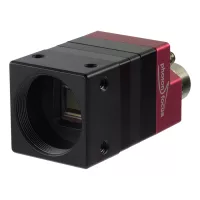Photonfocus OEM-D2080-160-LC Specifications
Ranked Nr. 66 of 126 2D Vision Systems

For customer that prefer to design their own camera solution but do not want to spend time on the sensor integration we offer a range of OEM camera modules. All of the features and technical data are identical to the standard cameras except for the interface board which is not included. Thus making it a perfect solution to interface to your own embedded vision system.
The module series OEM-D2080(IE)-160-LC is based on the Photonfocus A2080 and A2080IE CMOS image sensors. These Photonfocus CMOS sensors with a full well capacity (FWC) of 90 ke- are optimized for high dynamic range applications and a high signal-to-noise ratio (SNR). The modules have a parallel interface.
These modules focus on demanding applications in industrial image processing. They offer an extraordinary wide dynamic range due to the LinLog® technology and a high framerate combined with high resolution. Due to the global shutter, even high-speed applications with exposure times in the µs-area are possible.
FEATURES:
- Configurable region of interest (ROI)
- Up to 512 regions of interest (MROI)
- Decimation in y-direction
- Image correction
- 2 look-up tables (12-to-8Bit) on user-defined image region (Region-LUT)
- Constant frame rate independent of exposure time
- Crosshairs overlay on the image
- 3x3 convolver for image preProcessing
- Temperature monitoring of sensor and camera
- Camera informations readable over SDK
- Ultra low trigger delay and low trigger jitter
- Extended trigger input and strobe output functionality
- Status line in picture
| Image Type |
|
| Resolution | 2080 |












